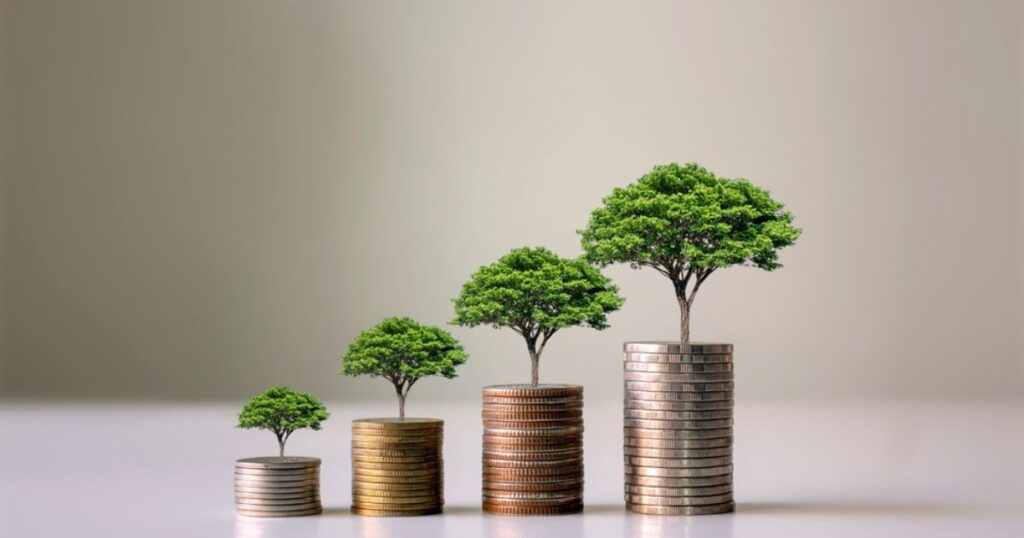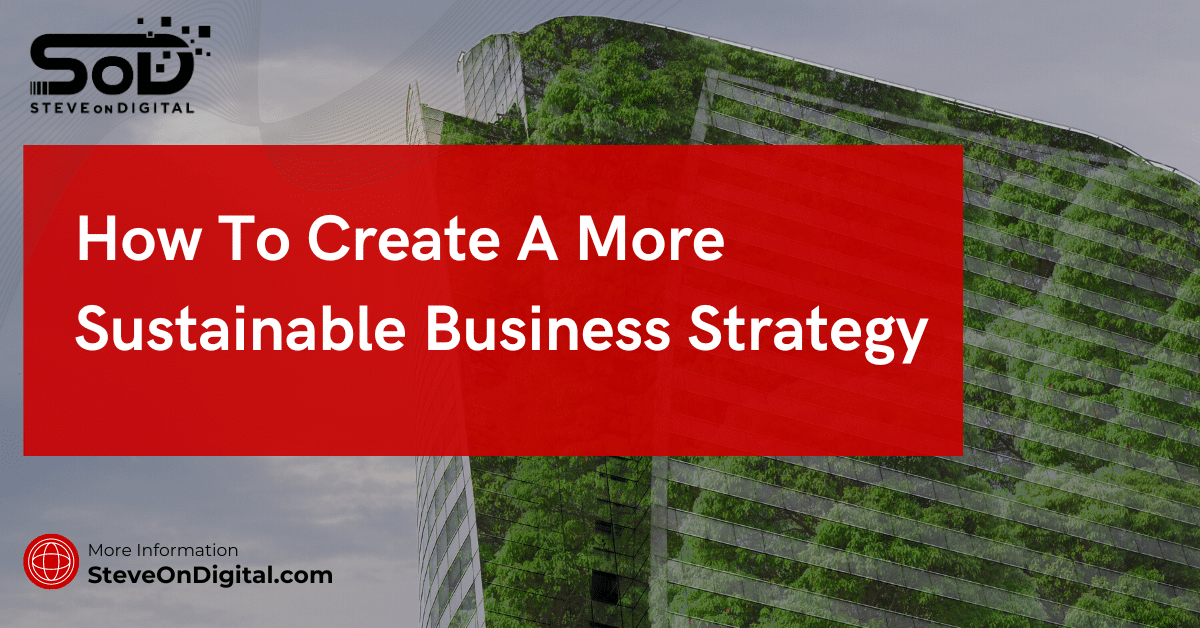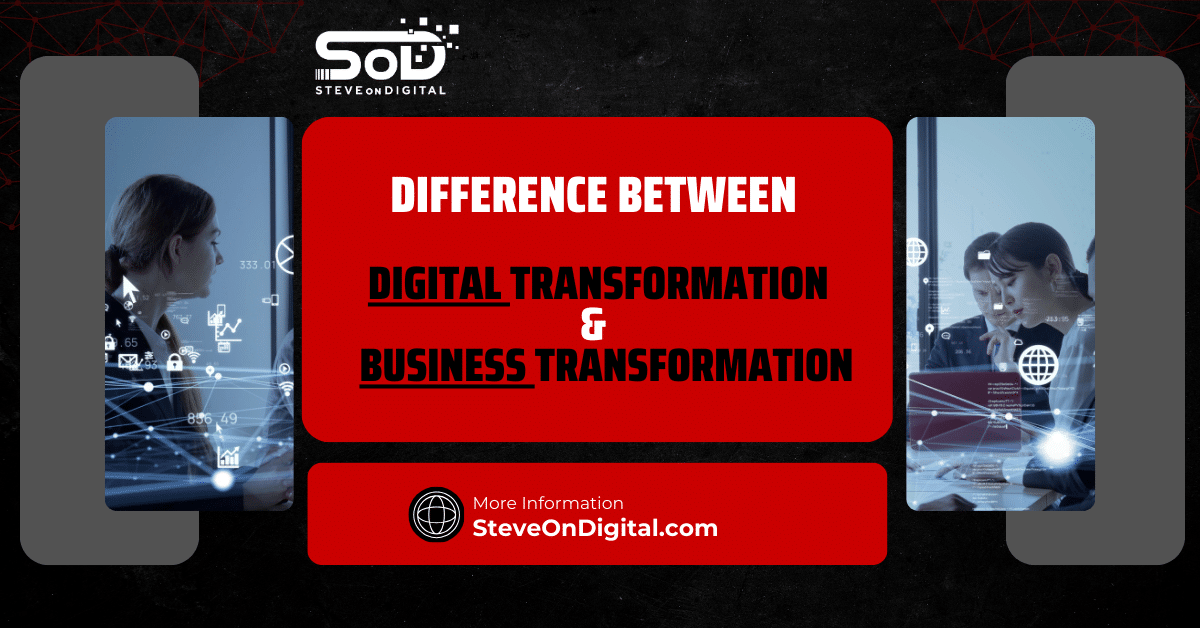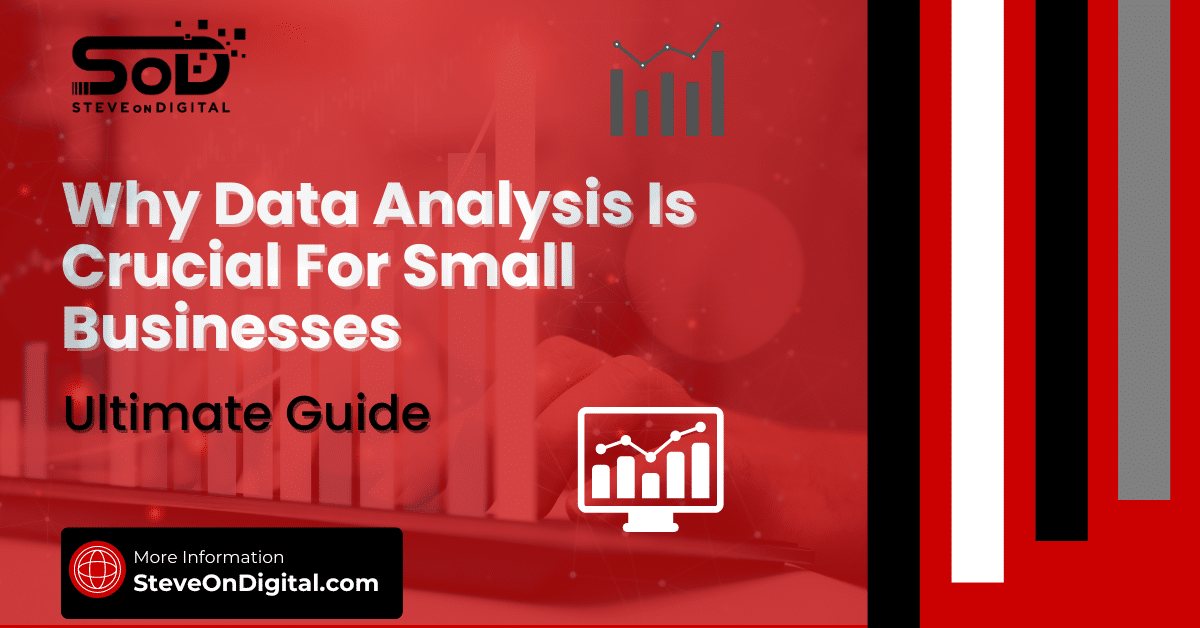As a Digital Transformation Specialist and the voice behind SteveOnDigital, I’ve dedicated my career to steering small and medium-sized enterprises (SMEs) towards digital and sustainable success.
With my expertise rooted in electrical engineering and expanded through an MBA and a master’s in Project Management, I understand deeply how crucial a sustainable business strategy is not just for compliance, but for thriving in today’s fast-paced market.
My approach is hands-on, drawing from a rich blend of industry knowledge and personal commitment to family, sports, and continuous education.
Today, I’m sharing insights on how to craft a more sustainable business strategy that ensures long-term success while positively impacting our community and planet.
This isn’t just business—it’s about building a legacy that respects both the earth and its inhabitants.
Introduction To Sustainable Business Strategies
When I first ventured into the digital landscape with SteveOnDigital, I realized that the core of enduring success was sustainability—not just in terms of content but in every aspect of business.
Today, I’m diving deep into why creating a more sustainable business strategy is not just a good-to-have, but a must-have in today’s business environment.
Sustainability in business goes beyond green practices; it’s about designing operations that can thrive over the long term without depleting the resources or harming the society on which they depend.
It’s about building a business that not only grows but improves the fabric of the community and protects the environment.
Integrating sustainable practices is not just beneficial for the environment but is also a key driver of business success, ensuring that sustainability is connected to business success in any sustainability strategy development.
As a business owner, my goal is to integrate sustainable practices that align closely with both business needs and environmental stewardship.
Understanding The Foundations Of Sustainability
Understanding the strategic aspect of a business sustainability strategy can transform the way you operate and how you are perceived in the market, emphasizing the importance of executive leadership in driving purpose-driven and authentic leadership from across the organization.
Definition And Principles Of Sustainability
A sustainable business strategy is one that fosters business growth while positively managing the company’s impact on the environment and society.
For me, this strategy isn’t just a concept but a practice.
It involves systematically applying changes that conserve resources, reduce negative environmental impacts, and balance social concerns with business needs.
At its core, a sustainable business strategy includes:
- Environmental stewardship: Ensuring that business operations do not harm the environment but instead contribute to its preservation.
- Social responsibility: Engaging in fair practices that benefit workers, communities, and the broader society.
- Economic viability: Operating in a way that is financially beneficial to the company but also contributes to the economic stability of the community and society at large.
- Addressing environmental and social issues: Emphasizing the importance of tackling environmental and social challenges through strategic sustainability and sustainable business innovation. This involves forming partnerships and finding a balance between these concerns and economic objectives.
Comparing Sustainable And Traditional Strategies
Traditional business models often prioritize short-term gains and profitability with little consideration for long-term sustainability.
In contrast, a sustainable business strategy focuses on long-term outcomes and benefits.
It’s a shift from a profit-only mindset to a profit-with-purpose philosophy.
From my experience, transitioning to a more sustainable business approach has not only enhanced SteveOnDigital’s brand reputation but has also opened up new investment opportunities.
Clients and consumers today are more conscious about whom they do business with or purchase from, making sustainability a critical factor in their decision-making process.
This emphasis on sustainable practices aligns closely with my own experiences and the real-time data I’ve seen: companies integrating sustainability are witnessing growth in their brand reputation and customer loyalty.
They’re not just surviving; they’re thriving by respecting and enhancing the community and environment around them.
| Feature | Traditional Business Strategy | Sustainable Business Strategy |
| Focus | Short-term financial gain | Long-term value creation |
| Resource Usage | High consumption, less efficiency | Resource-efficient, low waste |
| Stakeholder Engagement | Limited to investors and shareholders | Includes broader community and environment |
| Risk Management | Reactive | Proactive and preventive |
| Regulatory Compliance | Meets minimum requirements | Exceeds standards to ensure future viability |
| Innovation | Incremental improvements | Innovation driven by sustainability challenges |
Strategic Planning For Sustainability
As I delve deeper into making SteveOnDigital not just a business but a sustainable enterprise, strategic planning is a cornerstone I cannot ignore.
Integrating sustainability into strategic planning isn’t just about being responsible; it’s a smart business move that can drive long-term success.

Strategic planning for sustainability begins with a thorough assessment.
It’s crucial to understand where you currently stand before setting a course for where you want to go.
This involves looking at everything from your resource usage and supply chain operations to how your business practices affect the community and environment.
It’s not just about finding problems but also recognizing opportunities where sustainability can be woven into existing and new business strategies.
A successful sustainability strategy involves integrating sustainability into the core strategic planning of the business, ensuring a clear vision, gaining buy-in from top management, efficient communication at all levels within the organization, and establishing a fundamental connection between the sustainability strategy and the overall business strategy.
Sustainability Assessment
Conducting a sustainability assessment was an eye-opener for me.
It showed me areas where my business was already making a positive impact and areas where we could improve significantly.
To start, I evaluated our energy consumption, waste management, and the sustainability of the materials we use.
Here’s how you can do it:
- Review current practices: Look at your operations, products, and services to identify key environmental and social impacts.
- Engage with stakeholders: Gather feedback from customers, employees, and suppliers about their views on your business’s sustainability practices.
- Use sustainability assessment tools: Tools like carbon footprint calculators and sustainability audits can provide a more quantitative analysis.
By understanding the baseline, you can make informed decisions that lead to significant improvements.
The role of sustainability professionals is crucial in conducting thorough sustainability assessments and developing effective strategies to integrate sustainability into business operations.
Setting Clear Sustainability Goals
After the assessment, it’s crucial to set clear, achievable sustainability goals. These goals should be specific, measurable, achievable, relevant, and time-bound (SMART).
For instance, reducing greenhouse gas emissions by 25% within five years or achieving zero waste to landfill by 2030.
These aren’t just numbers; they reflect a commitment to a sustainable future.
Here’s how I approached setting these goals:
- Identify priority areas: Based on the assessment, focus on areas with the highest impact.
- Engage stakeholders: Include insights from employees, customers, and partners to ensure the goals are comprehensive and supported.
- Commit publicly: Publicly committing to these goals adds an extra layer of accountability and can enhance brand reputation.
Engaging Stakeholders In Sustainability Initiatives
Business leaders play a pivotal role in engaging stakeholders and championing sustainability initiatives within their organizations, ensuring that these efforts are deeply integrated into the business strategy.
One of the most crucial lessons I learned in enhancing sustainability at SteveOnDigital is the importance of engaging both internal and external stakeholders.
Their buy-in is essential because sustainability is a team sport—it’s about collective action towards a common goal.
Identifying Key Stakeholders
Identifying who needs to be involved is the first step.
Internal stakeholders include employees at all levels, while external stakeholders might be suppliers, customers, local communities, and regulatory bodies.
Understanding their interests and concerns is crucial because it influences how sustainability initiatives are shaped.
Here’s how I identify and categorize stakeholders:
- Map stakeholder relationships: Understand who influences and who is influenced by your business activities.
- Assess their impact: Determine how significantly each stakeholder can impact or is impacted by your sustainability efforts.
Effective Engagement Strategies
Once stakeholders are identified, engaging them effectively is key.
This means regular communication, involving them in decision-making, and showing how sustainability benefits them.
For instance, showing customers how sustainable practices reduce environmental impact or explaining to suppliers how sustainability can reduce costs and improve efficiency.
Here’s what has worked for me:
- Create engagement forums: Whether through regular meetings, surveys, or workshops, make sure there are channels for stakeholders to provide input.
- Transparency: Regular updates about sustainability efforts and their results help build trust and maintain engagement.
- Incentivize participation: Recognize contributions and provide incentives for active participation in sustainability initiatives.
By effectively planning and engaging stakeholders in sustainability, businesses can not only enhance their operational efficiency and brand reputation but also contribute positively to a more sustainable future.
This approach has not only helped in reducing operational costs but also in building a stronger, more committed relationship with everyone involved with SteveOnDigital.
Implementing Sustainable Business Practices
In my journey with SteveOnDigital, integrating sustainability strategies into our business model was pivotal.
These strategies, focusing on long-term sustainability by aligning non-financial aspects with our commercial practices, were not just about making a statement but about forging a significant difference.
Implementing sustainable business practices is a key component of these broader sustainability strategies, which include approaches like materiality assessment and greenhouse gas reporting.
Here’s how I started implementing these changes, and how you can do the same.
Sustainable Supply Chain Management
Managing a supply chain sustainably involves a series of deliberate actions aimed at minimizing our environmental footprint while also optimizing business outcomes.
Early on, I realized that every choice made in the supply chain had a ripple effect.
From the sourcing of materials to the final delivery of products, each step offers an opportunity for sustainability.
Here’s what I focused on to ensure sustainability across our supply chain:
- Vendor Selection: I prioritized vendors who actively follow sustainable practices, such as using renewable materials and reducing waste.
- Efficiency Optimization: By optimizing logistics and transportation routes, we significantly reduced our carbon emissions.
- Waste Reduction: We implemented recycling programs and reduced packaging materials, drastically cutting down waste.
These changes didn’t just improve our environmental impact; they also enhanced our efficiency and were well-received by our customers, who value ethical business practices.
| Initiative | Description | Benefits |
| Eco-friendly Materials | Use of recycled or renewable materials | Reduces environmental impact, supports recycling industries |
| Supplier Audits | Regular sustainability audits for suppliers | Ensures compliance with sustainability standards |
| Logistics Optimization | Use of efficient routing and transport modes | Lowers carbon emissions, reduces transportation costs |
| Packaging Reduction | Minimizing use of packaging materials | Decreases waste, reduces raw material usage |
Renewable Energy Adoption
Adopting renewable energy was another step towards building a sustainable business.
It’s not just about being environmentally conscious; it’s about long-term financial savings and energy security.
Here’s how I approached it:
- Solar Power: We installed solar panels at our office, which now generate a substantial portion of our energy needs.
- Energy Contracts: Where on-site generation wasn’t feasible, we switched to green energy providers to ensure our energy was sourced from renewable sources.
- Energy Efficiency: Beyond sourcing, we upgraded our systems to energy-efficient models, reducing our overall energy consumption.
Monitoring, Reporting, And Communication
No sustainability strategy is complete without a robust framework for monitoring, reporting, and communication.
It’s crucial for tracking progress, making adjustments, and transparently sharing our journey with stakeholders.
Tools For Measuring Sustainability
To effectively track our sustainability efforts, we invested in several tools that help measure our environmental impact and performance.

Here are a few that made a significant difference:
- Carbon Footprint Calculators: These tools helped us understand our total greenhouse gas emissions and identify areas for improvement.
- Sustainability Reporting Software: Specialized software made it easier to collect data, track performance against our sustainability goals, and prepare reports.
These tools not only simplified our monitoring processes but also provided data that is crucial for informed decision-making.
| Metric | Tool Used | Purpose |
| Carbon Footprint | Carbon calculator | To measure total greenhouse gas emissions |
| Energy Consumption | Energy monitoring software | To track energy usage and efficiency improvements |
| Waste Management | Waste tracking systems | To monitor waste reduction and recycling rates |
| Water Usage | Water flow sensors and monitoring | To assess water conservation efforts |
Reporting Sustainability Achievements
Communicating our sustainability efforts has been key to building trust and maintaining transparency with our stakeholders.
Here’s how I ensured our communications were effective:
- Regular Updates: We provide quarterly updates on our sustainability progress, which keeps our stakeholders informed and engaged.
- Stakeholder Meetings: Annual meetings with stakeholders not only allow us to report back but also gather feedback and ideas for further improvement.
- Public Disclosure: We publicly share our sustainability reports to show our commitment and progress towards a more sustainable future.
Implementing these practices and communicating them transparently has not only improved SteveOnDigital’s operational sustainability but has also strengthened our brand reputation and supported business growth.
Overcoming Challenges In Sustainability
As I’ve integrated sustainability more deeply into the fabric of SteveOnDigital, I’ve faced my fair share of challenges.
These hurdles are not unique to my business; they’re common across industries as companies strive to align profitability with planet-friendly practices.
Let’s discuss what these challenges are and how I tackled them, providing a blueprint for others facing similar issues.
Overcoming these sustainability challenges can lead to significant business benefits, including value creation and risk mitigation, by showcasing statistics and demonstrating how sustainability efforts can lead to improved financial performance from a commercial perspective.
Navigating Financial And Operational Challenges
The financial and operational aspects of implementing sustainable practices can be daunting.
Initially, the upfront costs of switching to sustainable technologies or processes seemed high.
For instance, retrofitting the office with energy-efficient lighting and solar panels required a significant initial investment.
However, what I found—and what many don’t initially see—is that these investments pay off.
Not only in terms of reduced energy costs but also through incentives like tax breaks and improved brand reputation, which can drive sales.
To handle these financial challenges:
- Budget for long-term savings: I looked beyond immediate costs to the long-term benefits, planning our finances around future savings.
- Seek out incentives: I researched and took advantage of government and private sustainability incentives, which eased the financial burden significantly.
Operational changes also posed challenges, especially when altering our existing workflows and processes to accommodate new, greener technologies.
Here’s how we managed:
- Gradual implementation: Instead of overhauling everything at once, we introduced changes incrementally to allow our team to adapt without overwhelming them.
- Employee training: Investing in training ensured everyone was on board and knew how to make the most of new technologies and practices.
Strategies For Overcoming Resistance
Resistance to change is a natural human tendency, and it was present within my team as well.
Some viewed new sustainability practices as an unnecessary complication, especially if they felt it might hinder their work efficiency.
To overcome this resistance, communication was key. I made sure to:
- Clearly communicate the why: Explaining the reasons behind changes and how they align with our core values helped in gaining buy-in.
- Involve the team in planning: By involving the team in sustainability planning and decision-making, they felt a sense of ownership over the changes, reducing resistance.
Scaling And Expanding Sustainability Efforts
After establishing sustainable practices internally, the next step was to scale and expand these efforts as part of a broader sustainable strategy.
This approach is crucial for developing and integrating sustainability into our overall strategic planning and vision, emphasizing the identification of material sustainability issues and aligning our responses with competitive positioning.
It meant not just keeping these practices within our office walls but extending them through our entire network and influence, making the investment case to leadership and investors for broader impact.
Leveraging Technology And Innovation
Technology has been a cornerstone of our sustainability scaling efforts.

Innovations such as cloud computing have reduced our need for physical resources, while IoT (Internet of Things) devices have enabled us to monitor and manage energy usage efficiently and in real time.
Here’s how leveraging technology helped:
- Smart systems: Using smart thermostats and lighting systems reduced energy waste dramatically.
- Data analytics: By harnessing data, we could pinpoint exactly where to optimize our operations to achieve the greatest efficiency and sustainability.
Building Partnerships And Collaborations
No business is an island, and sustainability is a journey that requires collaboration.
Partnering with other companies and organizations that prioritize sustainability has amplified our impact and allowed us to reach sustainability goals that we couldn’t achieve alone.
Here’s how partnerships have enhanced our efforts:
- Shared resources: By pooling resources with partners, we managed to reduce costs and increase our collective sustainability impact.
- Cooperative initiatives: Engaging in joint ventures, like community clean-up projects or sustainability workshops, has bolstered our community presence and effectiveness in sustainability efforts.
Scaling sustainability efforts through technology and partnerships not only multiplies the positive impact we can have but also aligns with our mission to be a leading digital innovator that prioritizes the planet as much as profits.
As I continue to guide SteveOnDigital towards a greener future, these strategies remain central to our approach, ensuring we maintain our commitment to sustainability at every level of operation.
Final Thoughts On Building A Sustainable Future
As I reflect on the journey of integrating sustainability into SteveOnDigital, it’s clear that this isn’t just a trend but a fundamental shift in how businesses will operate in the future.
My commitment to building a sustainable business strategy isn’t just about improving our bottom line—it’s about setting a standard for future generations and ensuring the health of our planet.
The Future Outlook On Sustainability
Looking ahead, the trends in business sustainability point towards an even greater integration of green practices across all sectors.
Renewable energy, sustainable supply chains, and green building practices are becoming the norm, not the exception.
Companies that fail to adapt risk not only falling behind their competitors but also losing relevance in a world where consumers increasingly make choices based on environmental impact.
From my experience, here’s what I foresee:
- Regulatory Shifts: Governments worldwide are likely to impose stricter regulations on sustainability, pushing companies to accelerate their green initiatives.
- Technological Innovations: Advances in technology will continue to drive sustainability, making it easier and more cost-effective to implement sustainable solutions.
- Consumer Expectations: As awareness grows, consumers will demand more transparency and accountability, influencing companies to adopt more rigorous sustainability standards.
Continuous Improvement And Adaptation
The path to sustainability is not linear.
It requires ongoing adaptation and a willingness to learn and change.
At SteveOnDigital, we continuously evaluate our strategies and impact, ready to adapt and evolve as needed.
This approach has not only helped us mitigate risks but also seize new opportunities that align with our sustainability goals.
Key steps in this ongoing process include:
- Regular Assessments: We consistently measure our environmental impact and adjust our practices based on these insights.
- Stakeholder Engagement: Continuous dialogue with stakeholders helps us stay aligned with their values and expectations, ensuring our sustainability efforts are well-supported.
- Learning from Others: We keep an eye on industry trends and learn from the successes and failures of others, which informs our strategies and innovations.
In conclusion, creating a more sustainable business strategy is an ongoing journey of improvement and adaptation.
It’s a commitment to doing business responsibly—a commitment that not only secures the future of our environment but also enhances our company’s resilience and competitiveness in a rapidly changing world.
As I continue on this path, I am reminded daily that every small step counts and contributes to a larger, more sustainable future for all.



